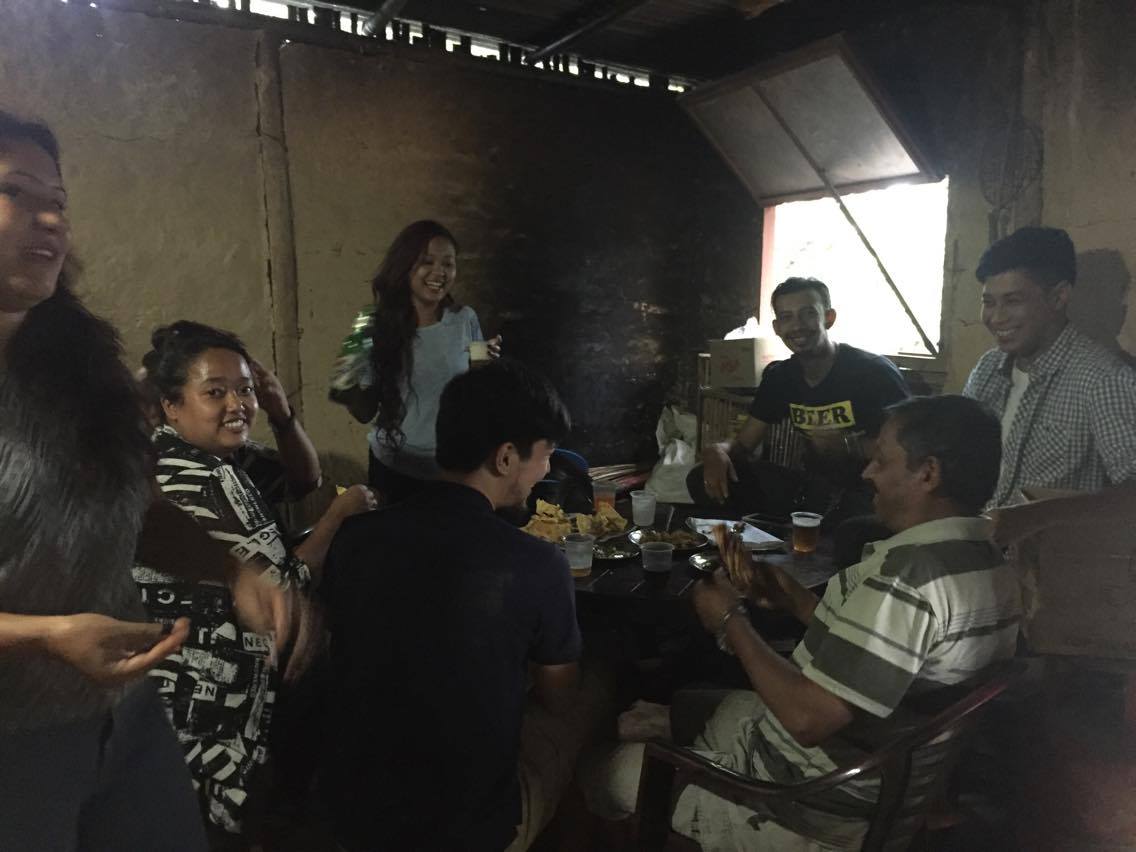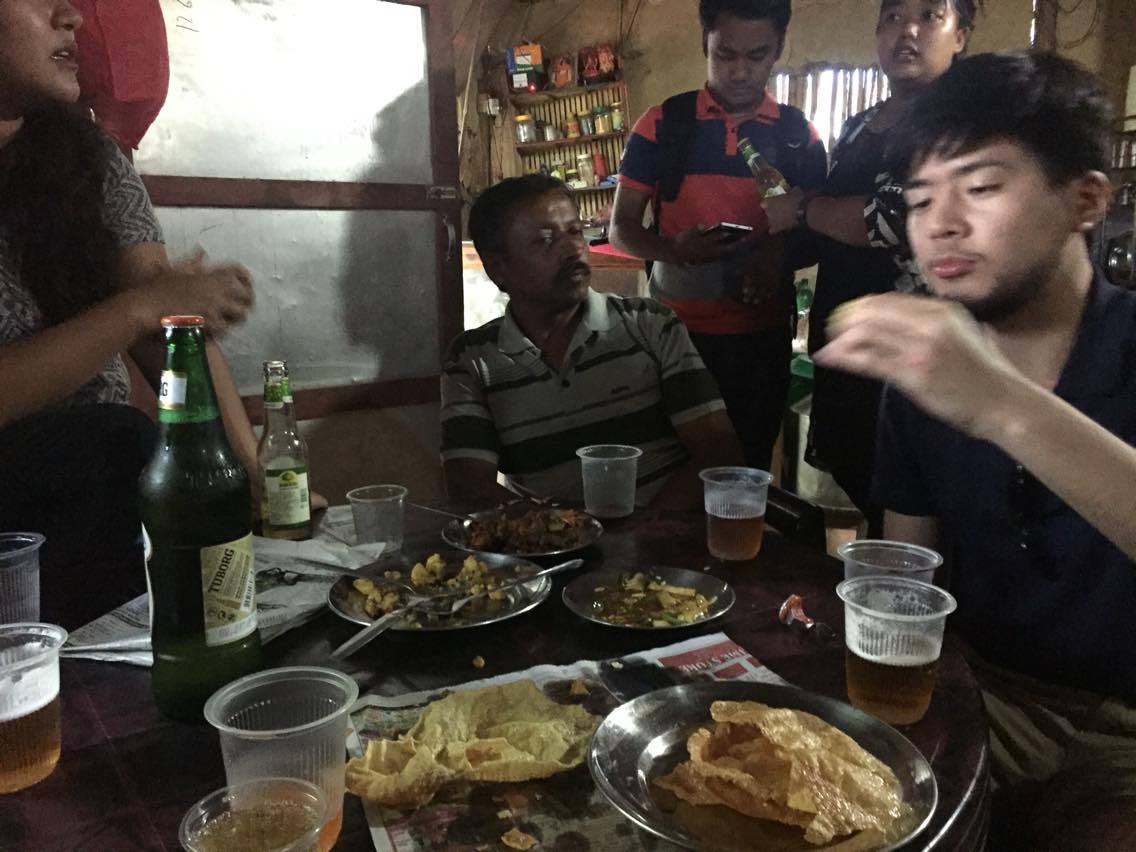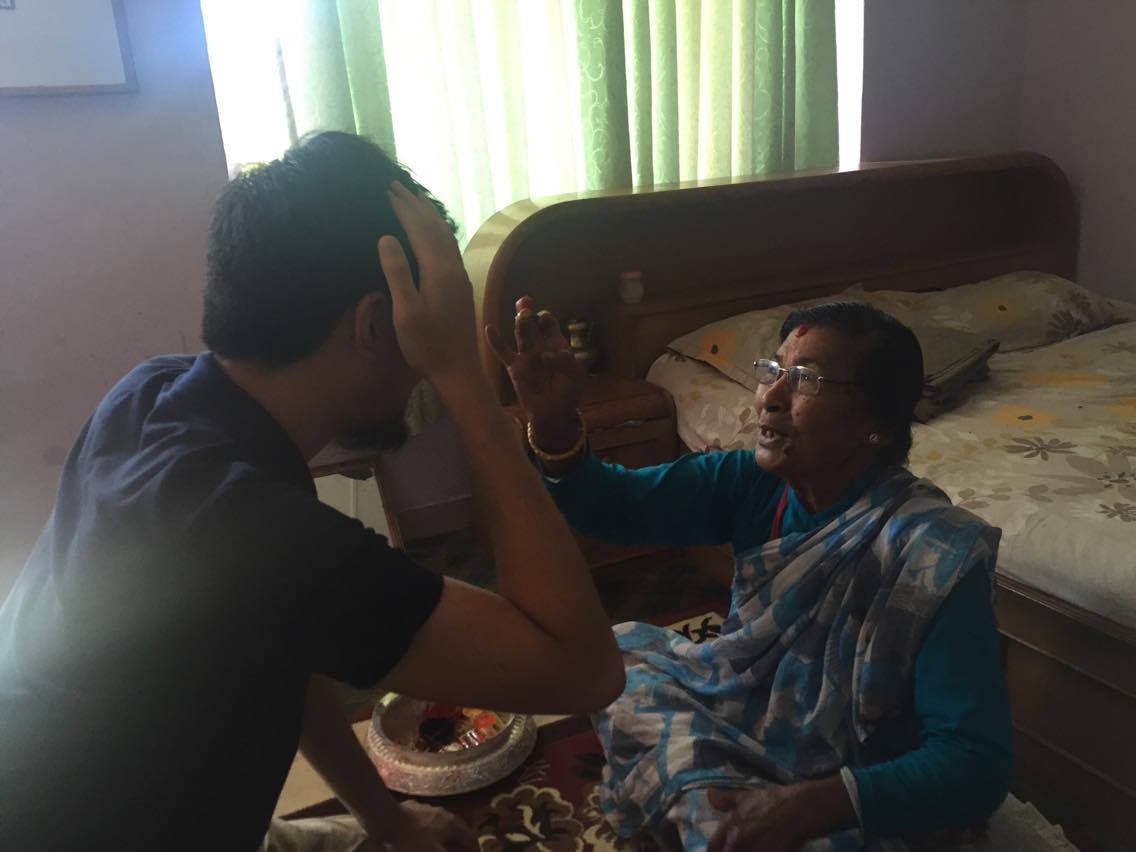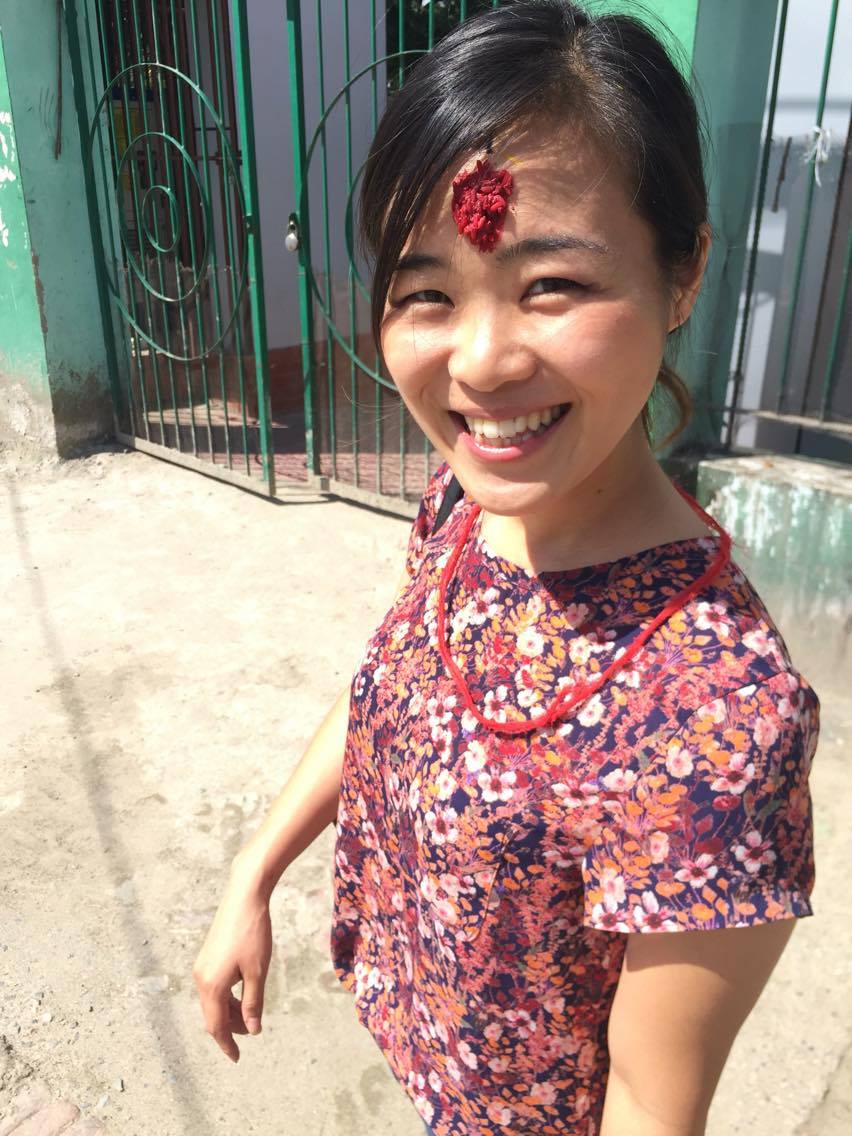Happy Dashain!
by Natsuko
Last week were on a week long Dashain holiday, the largest holiday in Nepal. Dashain, also known as Vijaya Dashami, celebrates the “triumph over evil”, commemorating the victory of gods over the demons. The goddess Durga, who played an instrumental role in the battle between Lord Ram against the wicked demon Ravana in the famous story, is especially worshiped during this time. The festival lasts for 15 days, and usually for a couple of days during the most important dates, all the shops, offices (even public ones) are closed. Some people take holidays until after Tihar, which is celebrated about 2 weeks after Dashain. It is said that 70% of the population in Kathmandu leaves during this Dashain week. True enough, Kathmandu was virtually a ghost town. Gone was the usual beeping and honking of the cars, and people yelling to sell their merchandise. Instead, there was quiet, and clean air.
Basically we stayed at home enjoying the unusual eeriness of the city, but that doesn’t mean that we didn’t get to join in some of the festivities.
These are a bunch of things we did that is pretty representative of how Dashain is celebrated.
###Home visits, cards, beer We visited our family in Chapagaun for a fun gathering of relatives. Dashain is the time where people visit one another’s homes, and spend time with family. Though the majority of the people in Kathmandu had to travel far back home to their villages, because the Chapagaun family had relatives within the valley, they did not need to go out. The Chapagaun family was my host family when I first visited Nepal in 2013. Since then, they have always included me in their activities, and have taken care of me. We made some snacks, and spent the whole evening drinking, chatting and playing cards.

Take munching as usual…

For the people who have to go out into the villages, many had to travel for one or two days, in overcrowded busses through dangerous roads. Accidents happened where the busses fall off from the narrow, rocky roads down the cliff. Apparently, some families split up the group into two busses, to avoid one whole family going down just in case. My friend said that she and her family walks 4 ~ 5 hours on the last stretch of the trip, for fear of getting into these kinds of accident.
###Tika
The placing of the red Tika on the forehead performed by elders is another important ritual. The elders bless the younger ones with the Tika, hand them some money, and present a sacred yellow grass called “Jamara” to be placed behind the ear. While we were walking on the road on the 4th or 5th day of Dashain, we met the couple whom we usually bought eggs and milk from. Upon greeting them, we were promptly swept into their home. We were made to sit down, and surrounded by the amused group of relatives, the grandmother gave us the blessings. Then the feast was brought in, one item after another. We were fed thoroughly with various meat items (chicken, buffalo, wild goat, mutton) , eggs, milk tea, and pickles. I was touched by how welcoming the whole family was, generously offering us food, and their blessing. Especially when we barely could communicate with one another! We were two random Japanese strangers, and they did not think twice about inviting us into their home to join in their religious rituals.

Animal sacrifices
Thousands of animals are sacrificed to the gods each year. Especially goats, that are looked on as a prized animal. We saw many goats being tied up to the front of the houses. Unfortunately, we witnessed some beheaded animals, and those that were being cleaned, just because they were quite openly performed. Apparently, there are some movements to stop this sacrificing of animals as an offering to God. At least the goats are eaten though.

My big Tika
Next up at the end of the month is Tihar! There will be another couple of days of holidays for this celebrated occasion. It’s pretty exciting to be in a country with so many festivities!
Subscribe via RSS